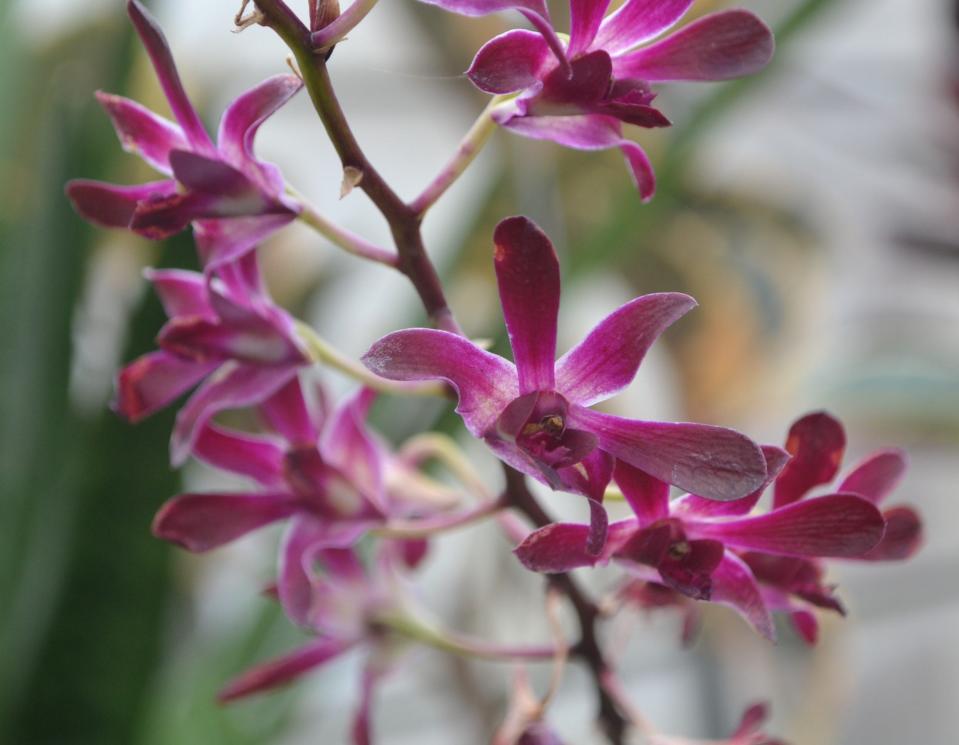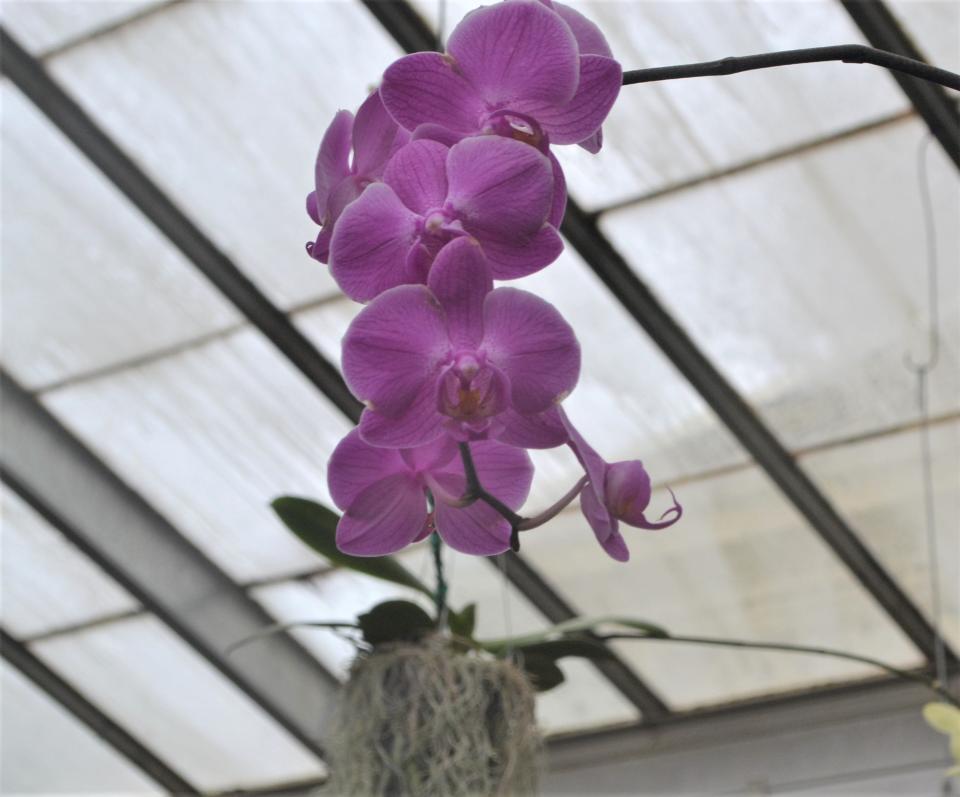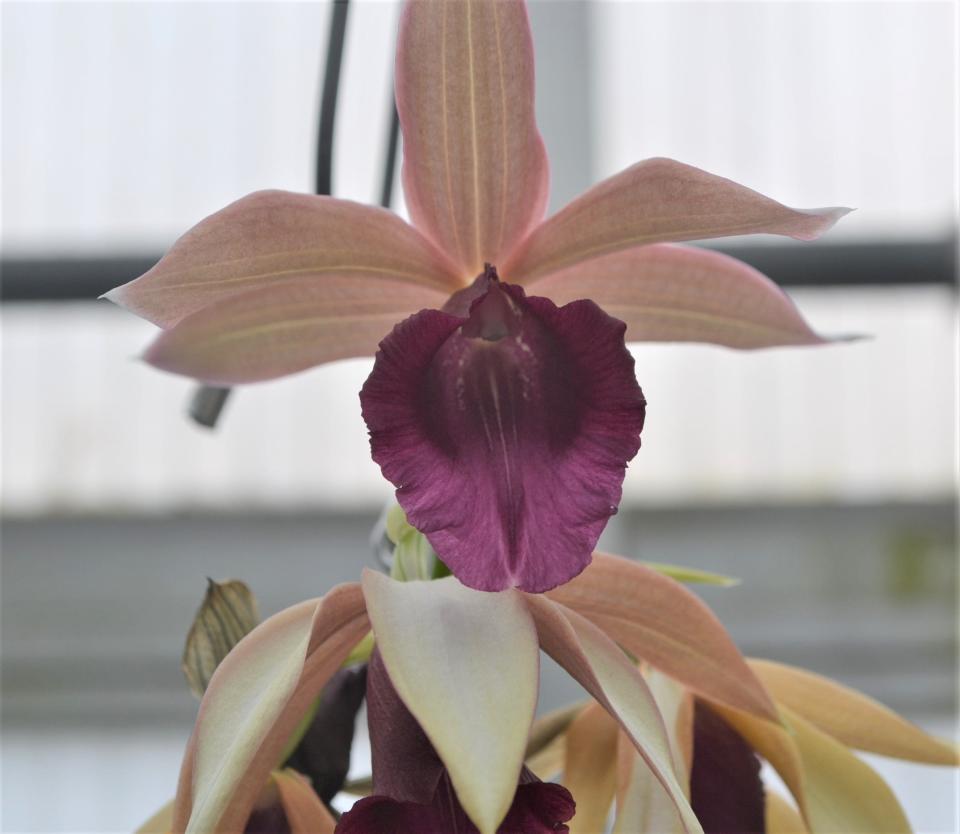A Stroll Through the Garden: An orchid tale and tips for their care
I've been surprised that no one has asked me about orchids as long as I have been writing this column, until two weeks ago. When I looked at all my files about plants that people have asked questions, I could not find one column about any orchid that I wrote since 2009. Kind of odd since there are 28,000 known species and 763 genera. My plan is to correct that today.

Back in the 1940s and early 1950s my dad met my mother at General Amherst High School in Amherstburg, Ontario. My dad was a country kid and my mom was a city kid. Mom was dating young men that would take her out on boats to the middle of the Detroit river and to other little docks along the way. Mom was invited to take some modeling classes in Detroit and may have been able to work for that agency. Country boys have fewer chances with these kinds of ladies.
What I found out just this past week from my dad was that he would regularly walk through a major orchid greenhouse in Amherstburg, Ontario, called Starcliff & French. This greenhouse had two separate houses that had a total of 8,000 square feet. At the time this orchid greenhouse would ship orchids all over the province. Dad enjoyed the warmth and humidity in the greenhouse and the beautiful flowers.
My dad mustered up the courage to ask mom out for a dance after getting to know her a little bit better and brought an orchid corsage each time he would take her to a dance. It was a good thing he had a productive trap line. In high school dad bought at least six corsages for my mom over the years he dated her. I guess I have a connection with orchids that I wasn’t aware. Mom loved orchids.
Two weeks ago a young lady at the pool asked me a question about the struggle she is having with her orchid. Seems that her orchid was still awfully wilty, even after her doing the ice cube routine that was recommended to her where she bought her orchid. Since the orchid is normally a jungle plant, it needs more moisture. Wilty orchids can be overwatered, underwatered, too much sunshine, too little sunshine, or lack humidity in the air.
Overwatering is normally the problem with the orchid having a wilty sick look. Because many orchids grow in trees, that means that they need a lot of air circulation. A good watering program will do the best if you allow the roots to dry out between waterings. One great help is that you should remember to get the potting medium appropriate for the orchid. There are different potting mediums. Yellow leaves or leaves that are falling off and dark and mushy roots can tell you that you are overwatering.

If you have limp, dehydrated and shriveled leaves, you may be looking at underwatered leaves. When you look at the orchid roots and see light green nearly white, plump, and flexible roots, this orchid is healthy. Whereas a dry, faded gray, and brittle root indicates underwatering. The big thing is that the blooms will also fall off sooner and can wilt. Soaking the roots can help.
If you have seriously dry lips in the room where you find your orchids, the humidity is too low. Jungle plants, like most orchids, need a humidity level of 60-80%, which makes sense and the orchid’s symptoms will look like underwatering. Faithful watering may not be enough to solve the problem. Humidifiers can increase the humidity in special areas plus cookie trays with pea gravel with water in the bottom of the tray.
Bright light for orchids is great for the most part but they don’t do well in direct sunlight for most of the day. If you have reddish brown "sunburn," you have a leaf that is vulnerable to disease. Sunburned leaves need to be removed and pruned. New leaves should appear.
This is a tricky one. If you have a healthy-looking plant with dark green leaves but haven’t seen a flower for a year, you may not have enough light for the plant to produce photosynthesis. Relocation of your plant to a brighter location may be the best alternative.

There are local wild orchids, which we can find if we search 49 different orchids in Ohio. One of the six species of Lady Slipper orchids known in Ohio has been reported at a small park between Wooster and Ashland — Wooster Memorial Park. I have not seen it, but a few people have reported its existence.
I got an email from the head gardener at Kingwood last week, and I want all of you to know that there are many early spring flowers at the garden. If you take a short trip you may find the cure for the winter blues you may still have.
Hope you have a great stroll through your garden. If you have any challenges, drop me an email at ericlarson546@yahoo.com and I’ll do the best I can to help. I may not have identified the orchids correctly. Thank you for participating in our column.
Eric Larson of Jeromesville is a veteran landscaper and gardening enthusiast and a founding board member of the Ohio Chapter of Association of Professional Landscape Designers.
This article originally appeared on Mansfield News Journal: How to care for your orchid plus a family's connection to the flower

